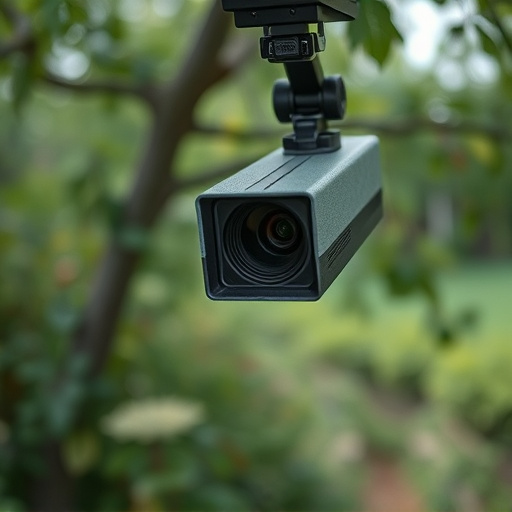Optical sensor technology is a powerful tool for detecting small hidden cameras in intimate spaces like bedrooms, utilizing advanced light detection and non-intrusive methods such as infrared imaging and EMF detectors. Professionals use these technologies to uncover covert surveillance equipment, ensuring privacy and security for homeowners concerned about hidden cameras. However, the widespread availability of small hidden cameras raises ethical dilemmas and legal challenges, emphasizing the need for strict regulations and responsible use of such technology to protect civil liberties.
Uncover the secrets behind advanced optical sensor detection techniques for small hidden cameras in bedrooms. This comprehensive guide explores cutting-edge methods professionals employ to identify discreet surveillance devices, ensuring privacy and security. From understanding optical sensor technology to ethical considerations, we delve into the world of hidden camera detection, offering insights into the latest advancements and legal implications.
- Understanding Optical Sensor Technology for Hidden Cameras
- Detecting Small Hidden Cameras in Bedrooms Using Professional Methods
- Advanced Techniques for Locating Discreet Surveillance Devices
- Ethical Considerations and Legal Implications of Using Optical Sensors for Privacy Checks
Understanding Optical Sensor Technology for Hidden Cameras
Optical sensor technology plays a pivotal role in detecting small hidden cameras, especially those strategically placed in intimate spaces like bedrooms. These sensors are designed to identify subtle anomalies that might indicate the presence of covert surveillance devices, ensuring privacy and security for residents. By utilizing advanced light detection and analysis, optical sensors can uncover hidden cameras that may be imperceptible to the naked eye.
In the context of small hidden cameras for bedrooms, understanding the capabilities of these sensors is paramount. They are capable of detecting irregular patterns in light reflection and emission, which could suggest the presence of a camera lens or other optical components. This technology has become increasingly sophisticated, enabling professionals to effectively navigate and mitigate privacy risks associated with such devices, providing peace of mind for homeowners concerned about their personal spaces.
Detecting Small Hidden Cameras in Bedrooms Using Professional Methods
In today’s digital era, privacy concerns have grown significantly, especially with the potential presence of small hidden cameras in bedrooms. Professional methods for detecting such devices are essential to ensuring a secure living space. Skilled experts utilize advanced optical sensor technologies and specialized equipment to sweep and scan for any signs of surveillance equipment. These methods include infrared imaging, which can reveal heat signatures different from the human body, potentially indicating the presence of a hidden camera.
Moreover, professionals may employ long-range optical sensors capable of capturing high-resolution images from outside the bedroom, searching for any unusual fixtures or devices attached to windows or walls. This non-intrusive approach allows for the early detection of small hidden cameras without causing any disturbance to the space or its occupants.
Advanced Techniques for Locating Discreet Surveillance Devices
In the quest to uncover hidden surveillance devices, professionals employ advanced techniques tailored to detect even the smallest hidden cameras, like those designed for bedrooms. One powerful method involves infrared thermal imaging, which can identify heat signatures emitted by electronic devices, revealing their presence even when they’re turned off and visually undetectable. This technique is particularly effective in identifying miniature cameras that might be disguised as everyday objects.
Additionally, professionals utilize electromagnetic field (EMF) detectors to sniff out the faint electromagnetic signals these tiny gadgets emit. Given the ever-growing prevalence of small hidden cameras for bedroom use, these innovative methods have become indispensable tools for privacy protection and security professionals alike, ensuring that no covert recording device goes unnoticed.
Ethical Considerations and Legal Implications of Using Optical Sensors for Privacy Checks
The use of optical sensors, particularly small hidden cameras for bedroom monitoring, raises significant ethical considerations and legal implications that must be addressed. As technology advances, these tiny devices become increasingly accessible, allowing individuals to invade privacy in ways never before imagined. This has led to growing concerns about surveillance ethics, with debates centered on the balance between security and personal privacy.
In many jurisdictions, the installation of hidden cameras without consent is illegal and a violation of civil liberties. The use of optical sensors for privacy checks must adhere to strict regulations to ensure that individuals’ rights are not infringed upon. This includes obtaining proper authorization, ensuring transparency in surveillance practices, and implementing robust data protection measures to safeguard personal information captured by these devices.
In conclusion, the advancement in optical sensor technology has empowered professionals to detect even the smallest hidden cameras in bedrooms using sophisticated methods. By combining advanced techniques and ethical considerations, it’s possible to maintain a safe and private environment while addressing potential privacy breaches. Understanding these technologies and their applications is crucial for both individuals seeking protection from small hidden cameras and professionals navigating the legal implications of such checks.
